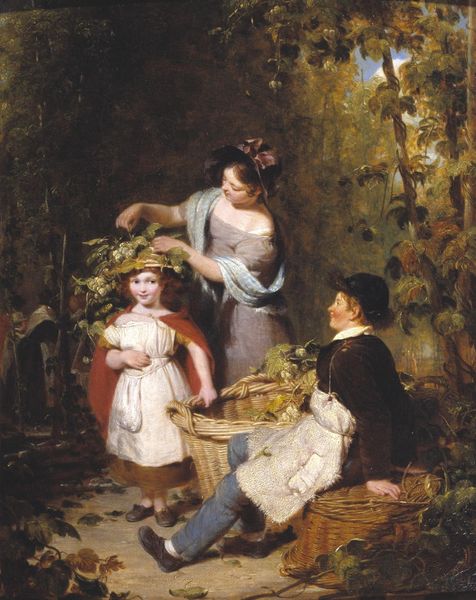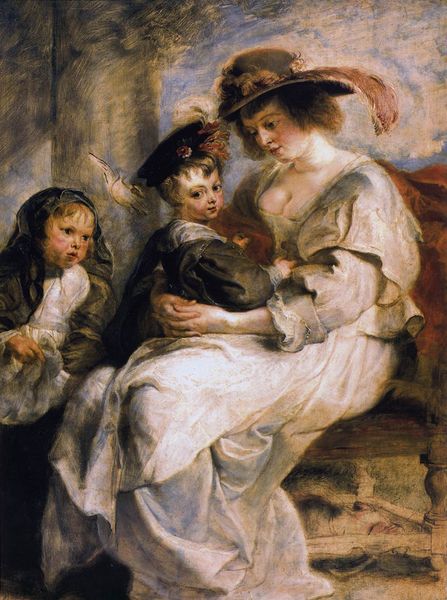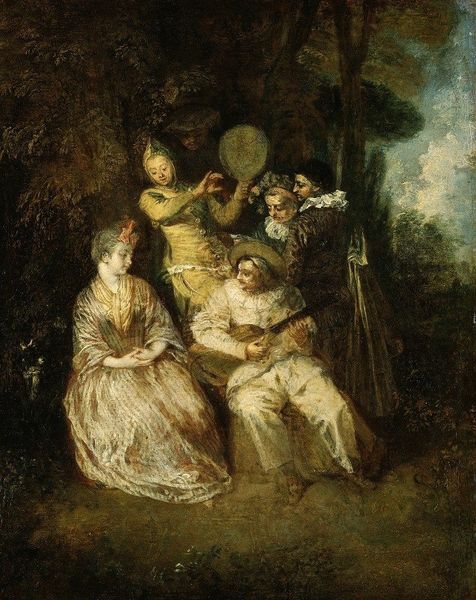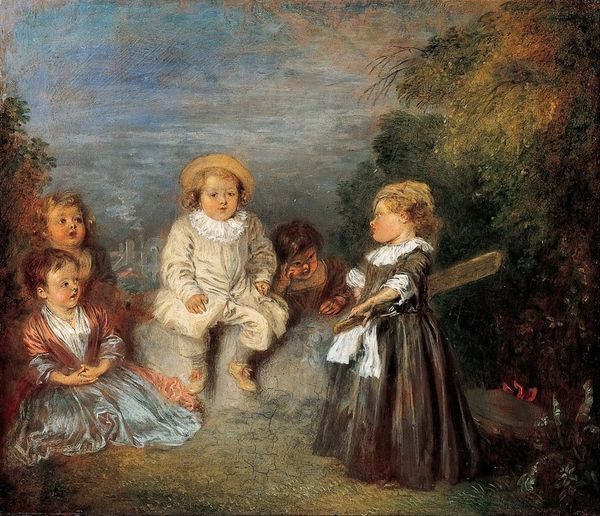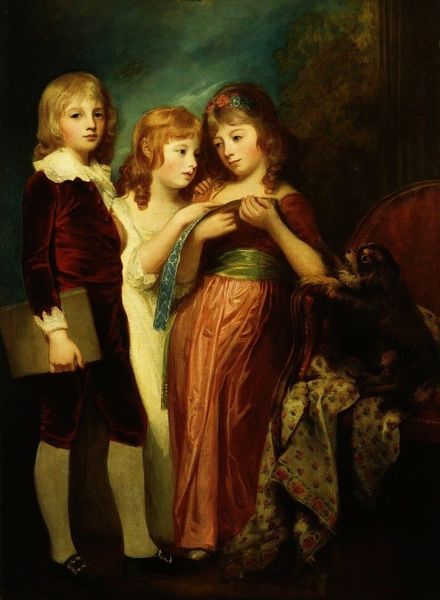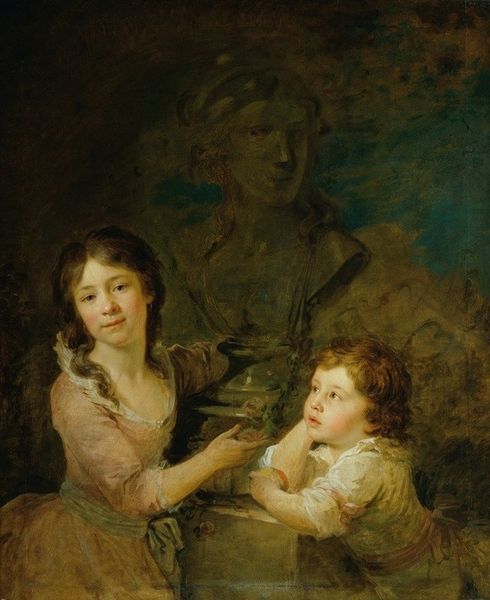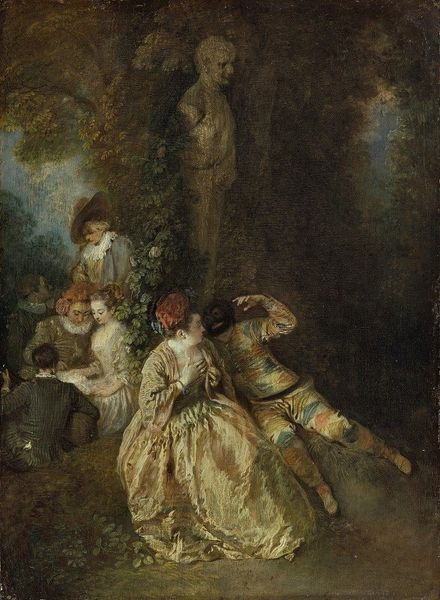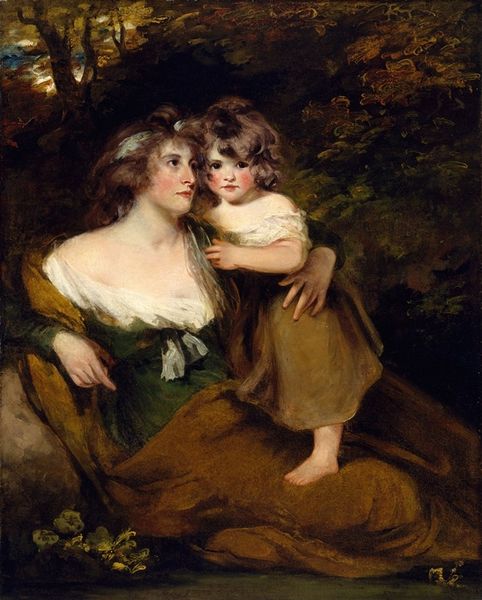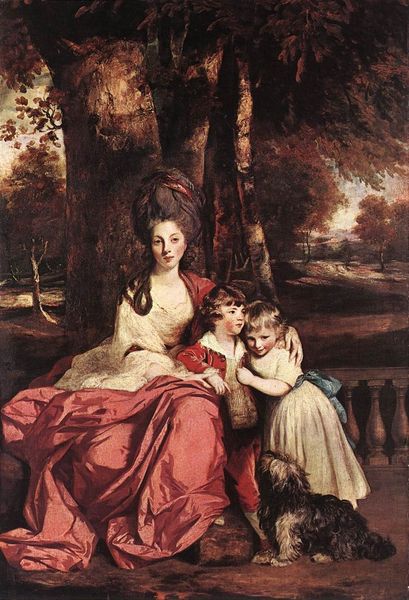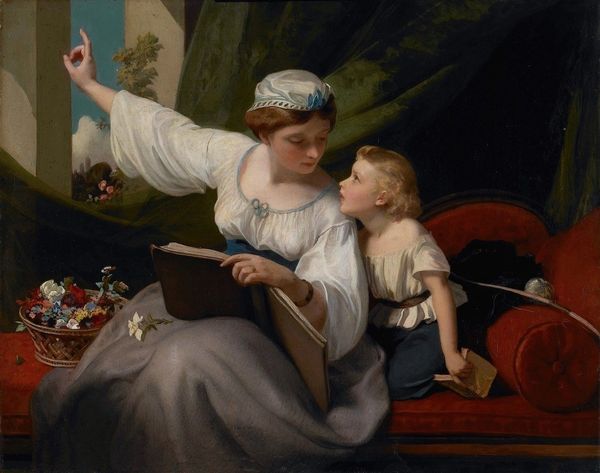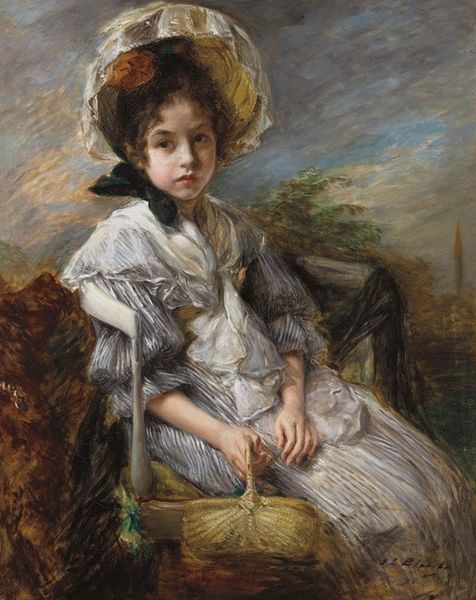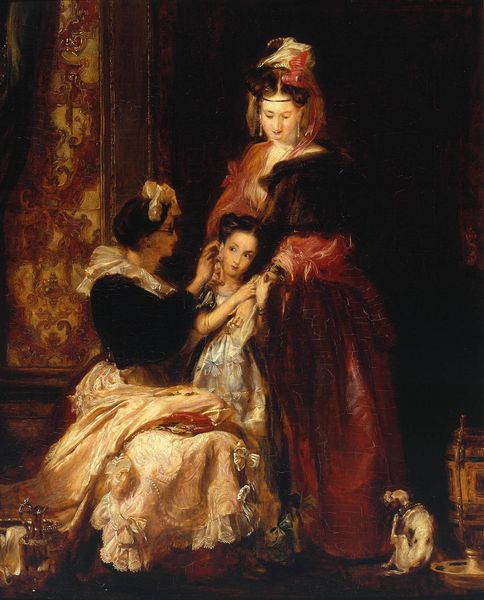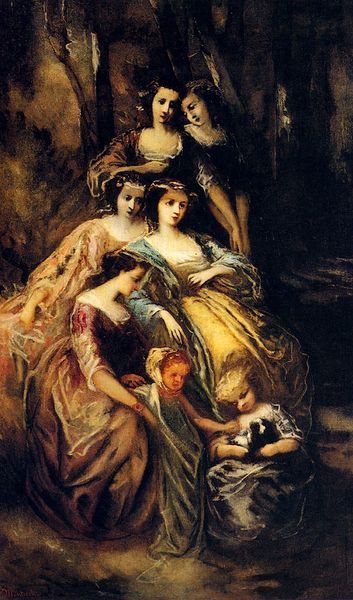
Dimensions: 123.2 x 145 cm
Copyright: Public domain
Curator: Sir Joshua Reynolds’ oil on canvas, dating back to 1778, titled “The Gypsy Fortune Teller.” Editor: An intriguing study in light and social dynamics. I am struck immediately by the almost theatrical rendering of the figures and the velvety richness of the color. Curator: Notice how the material conditions surrounding artistic production significantly shape this work. Reynolds, aiming to elevate portraiture, imbues the figures with dignity and positions them within a context that evokes classical motifs and themes of chance. Editor: Indeed. It’s apparent that the formal arrangement owes much to Renaissance compositional strategies. The contrasting expressions, and gestures are strategically employed to construct the narrative. Reynolds deliberately manipulates pictorial space to invite the viewer’s eye around a staged setting. Curator: What speaks volumes is how he uses the texture and luminosity of the oil paint, almost celebrating the craft and highlighting its labor-intensive nature. The brushwork seems confident but restrained. The underpainting also seems to be visible in some parts. Editor: Precisely, it's not just about pictorial representation, but also the layering of meanings encoded in the materiality of paint itself. The darker underpainting seems to bring out a stark contrast with the lightness of the Rococo style. I am almost unsettled by this artwork due to this particular stylistic collision. Curator: That uneasiness may stem from considering how the painting navigates shifting social attitudes towards labor and wealth. Here, fortune telling itself would likely have been associated with the lower echelons of society in 1778. There may be a critique or simply observation about labor embedded into the social narrative, or what some art historians call "genre painting" in some areas. Editor: Interesting how we are reading narrative art in oil paint. It prompts a reflection on the complex interplay between pictorial aesthetics and socio-economic narratives. The composition functions almost as a microcosm. Curator: It reminds us to consider the broader material conditions under which it was made, but also about labor. Editor: And I found that attention to the artist's choices, to color, tone, and balance can yield significant insights.
Comments
No comments
Be the first to comment and join the conversation on the ultimate creative platform.
